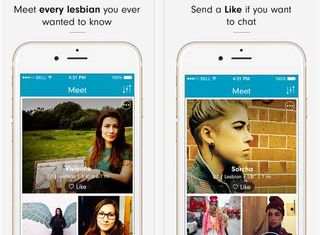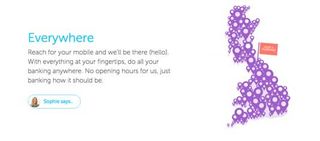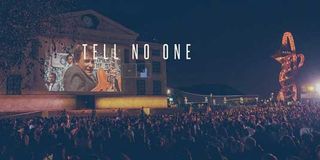What startups can teach us about branding
Airbnb and Uber get how to connect with customers emotionally, says Lippincott's Lee Coomber.
We live in an age of simplification. Products arriving with convoluted instruction manuals or needing to be charged for 72 hours are few and far between. Now, they often arrive fully programmed to be used from the get-go, packaging is lean and guidebooks are becoming obsolete.
Read 8 essential tips for launching a startup company
But the pace of innovation in technology – from new products through to the way and speed at which we shop, swap and upgrade – means it's increasingly difficult to differentiate and maintain advantage with products and services.
Today's most innovative brands therefore recognise the product is no longer the star. Instead they consider how people are using their products, how they fit in their daily lives, and innovate that experience.

Through experience innovation, brands connect with customers on a functional and emotional level.
Customer-centric not customer-led
The most successful companies of recent years are founded on business models that hold the consumer at heart. That's not to say they are led by consumers, but the best brands proactively listen to their needs, learn, innovate and refine, overturning the status quo in a way that works for the business.
Uber, for instance, the world's largest taxi company, doesn't have any vehicles; Facebook, the biggest media owner, doesn't own any media; Airbnb doesn't own property.
These landmark companies have become paramount because they bucked the trend and made customer experience as important as the product. But they did so through a brand lens – they reimagined the world in a way that corresponded with what was right for the brand.
Smaller startups
While the likes of Airbnb and Uber have become the poster boys of innovation, the myriad of other, smaller companies also championing experience innovation shouldn't be overlooked. Even the smallest start-ups are making their mark through innovation.

Think Deliveroo, TransferWise, Dattch, Relish and Secret Cinema. These businesses are all successful because they have real insight about people's lifestyles and personal everyday needs.
Brand as an ecosystem
While experience innovation is a powerful cut-through for businesses and a solution to hyper-competitiveness in products and services, it takes a completely different mindset to visualise how things could work better for consumers.
Brands need to be brave enough to be creatively disruptive, even if it means addressing things way outside of where they play today. This generates new challenges for established businesses, yet even the most monolithic institutions can evolve if they embrace the opportunity.
Santander, for instance, has announced a new venture to catalyse its digital offering by investing in tech start-ups. Atom, a new online-only bank, has just been approved by the Bank of England. These are just two examples of how something as institutionalised as financial services is innovating to simplify and improve the experience for customers.

Healthcare is another area ripe for innovation. Technology Enabled Care Services (TECS) developed by the NHS leverages new technology like telecare, telecoaching and self-care apps to improve people's day-to-day wellbeing.
Recent trials in the UK imply telehealth could reduce mortality by 45 per cent and emergency admissions by 20 per cent, as well as saving time and taking the ordeal out of GP appointments.
What experience innovators have in common is knowing that to create a brand, you need to consider how it fits into somebody's life and reflects their values. And by taking a holistic, end-to-end view, companies more fully address complete customer satisfaction and achieve a lasting, meaningful experience.
Surprise with innovation
When looking to innovate, it's also important to connect things in people's lives that don't appear obvious fits. MasterCard and Parkeon, which provides parking management solutions, are on a mission to enhance the urban mobility experience, for instance. City Connector, a new couponing platform, will deliver offers and services from local businesses through on-street parking meters, generating moments of consumer delight in unexpected ways.

Connect the experience across the brand, both internally and externally
At Lippincott we use the phrase, when you're building a brand, don't just say something, be something. Adopting an experience innovation mindset must permeate right into the company's internal structures.
Rather than breaking up the workforce into different specialities each responsible for their own ideas, teams should be multi-disciplined and their competencies aligned.
While this may seem a complex organisational task, business should take note: everyone is creative, they just need to be given freedom to be creative, and when people are given a common objective, rather than one specific problem to solve, they will start thinking in different, more innovative ways.
Many brands assume certain constraints from the outset, putting a limit on what they can achieve. Instead they should see everything as flexible in the long-run. Truly successful and valuable experience innovation is achievable – brands just need to give themselves the freedom to change.
Words: Lee Coomber
Lee Coomber is creative director, Europe and Middle East, Design for Lippincott
Liked this? Try these...
- Create an engaging 'journey film' for a brand
- How to promote yourself on any budget
- The ultimate guide to logo design

Thank you for reading 5 articles this month* Join now for unlimited access
Enjoy your first month for just £1 / $1 / €1
*Read 5 free articles per month without a subscription

Join now for unlimited access
Try first month for just £1 / $1 / €1
Get the Creative Bloq Newsletter
Daily design news, reviews, how-tos and more, as picked by the editors.
The Creative Bloq team is made up of a group of design fans, and has changed and evolved since Creative Bloq began back in 2012. The current website team consists of eight full-time members of staff: Editor Georgia Coggan, Deputy Editor Rosie Hilder, Ecommerce Editor Beren Neale, Senior News Editor Daniel Piper, Editor, Digital Art and 3D Ian Dean, Tech Reviews Editor Erlingur Einarsson and Ecommerce Writer Beth Nicholls and Staff Writer Natalie Fear, as well as a roster of freelancers from around the world. The 3D World and ImagineFX magazine teams also pitch in, ensuring that content from 3D World and ImagineFX is represented on Creative Bloq.
